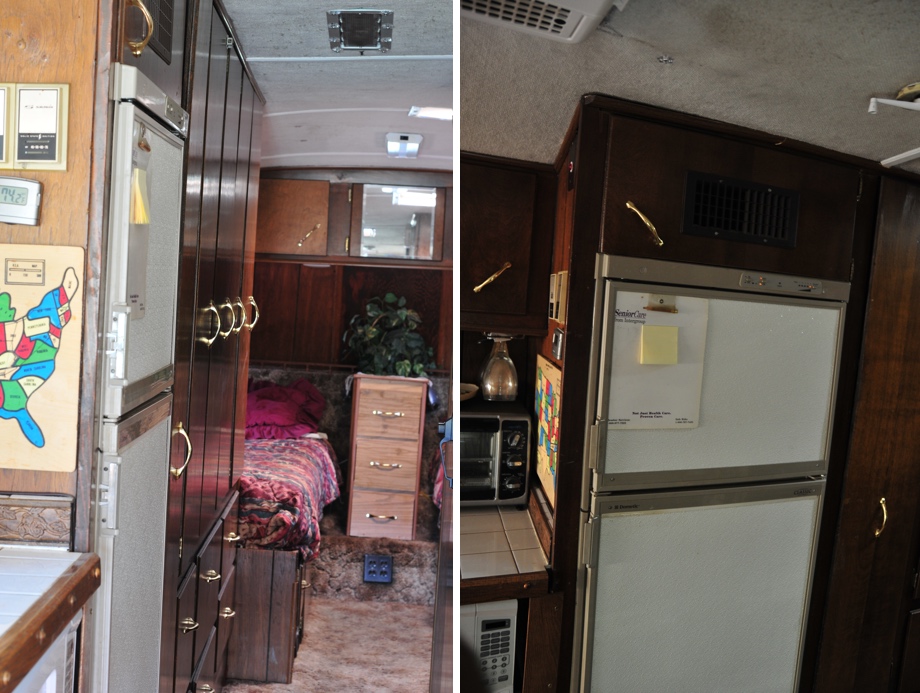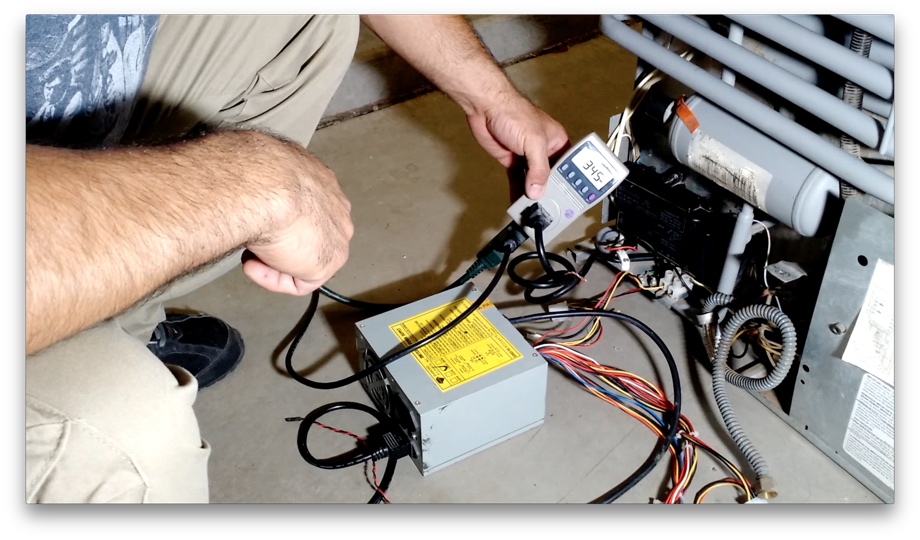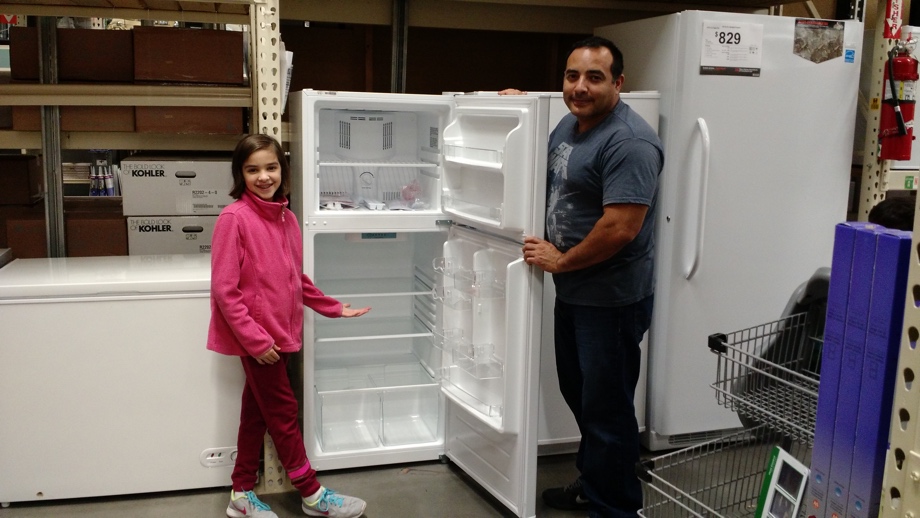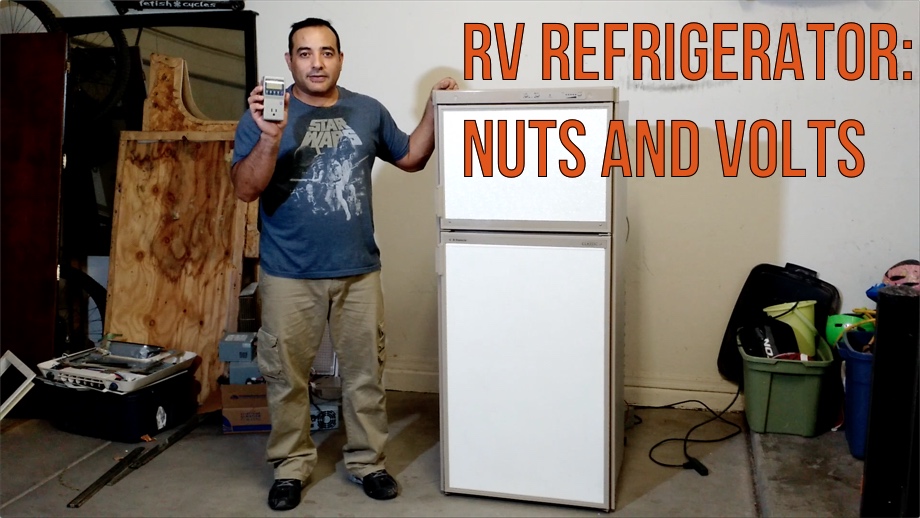RV refrigerators are strange. Strange and expensive. I have always wondered how the heck they can run on either propane or electricity (110 Volts A/C). Now that we have an RV, I had the opportunity to dive further into what the differences are between RV and "residential" refrigerators.
Most modern RVs now are leaning toward having "residential" refrigerators that are only electric - while the die-hard boondocking types seem to favor the "2-way" or even "3-way" RV style refrigerators. Typically "2-way" refrigerators can run on 110 Volt A/C household power or propane gas. "3-way" refrigerators can run both of these power sources plus 12 Volts DC to cool the unit down. Most sources that I have read indicate that the "residential" style refrigerators do better in hotter climates.
Unlike your refrigerator at home, RV refrigerators typically require a 12 Volt DC source to run "the brains" and a 110 Volt A/C source or propane to run the "cooling" part. Also unlike your home refrigerator, they do not have a compressor. This starts to explain how they can use propane to run them. Instead of a compressor, RV refrigerators use a "boiler" to heat a combination of ammonia, hydrogen, and water. It then uses a series of tubes and fins to facilitate the evaporation and condensation that allows for the "cooling" effect inside the refrigerator.
The refrigerator that came with our bus is an older unit - a Dometic RM2820. This is an 8 cubic foot, 2-door fridge with a freezer on top and the refrigerator part on the bottom. When we inspected the RV the refrigerator appeared to be working but we could not verify because RV refrigerators take a few hours to cool down. For an older RV refrigerator, this is actually a pretty big one. It is also pretty expensive - costing over $1400.00 new.
 The refrigerator was pretty nasty when we took it out - some sort of sticky orange sauce had spilled all over the inside. We even discovered an old, dehydrated piece of corn in one of the crisper drawers. We spent several hours scrubbing and detailing the refrigerator before we even knew it worked. To our delight, it actually works really well.
The refrigerator was pretty nasty when we took it out - some sort of sticky orange sauce had spilled all over the inside. We even discovered an old, dehydrated piece of corn in one of the crisper drawers. We spent several hours scrubbing and detailing the refrigerator before we even knew it worked. To our delight, it actually works really well.
Since we knew the refrigerator worked, we had a choice. We could keep the refrigerator, in which case it would not make sense to tear down the refrigerator compartment (RV refrigerators need to be in a completely air-tight compartment sealed off from the inside of the RV as well as have a rear access panel and rooftop vent). Or we could replace it with a residential or marine (12 Volt) refrigerator. Since we intend to do some boondocking, refrigerator efficiency was a big consideration.
Since we have purchased a large battery, we feel pretty safe about running the refrigerator primarily on 110 Volts A/C and only using the propane option occasionally. So we decided to run a few tests to see how much power it consumed. From watching and reading other RVers' blogs and youtube channels - we knew that the refrigerator was a large drain on the batteries (especially the newer "residential" style ones). So we decided to use a Kill-A-Watt and see exactly what kind of numbers we could expect. We suspected that the RV refrigerators might be a more efficient design since they did not have to run a compressor. Surely it takes less energy to run a boiler than a compressor, right?
Boy, were we wrong! The small RV refrigerator ended up using about 5 kWh of power per day. Our entire battery bank is about 24 kWh. This means that nearly every day about 20% to 25% of all our usable battery power would need to go to powering the refrigerator.


Since we really didn't know what to expect, we ran the Kill-A-Watt meter on our 10+-year-old, 25 cubic foot Whirlpool refrigerator in the house.
The results really surprised us! Our residential style fridge is using about 2 kWh of power per day to cool an area about 4 times bigger, AND it is being opened and closed all day.
Watch the video here:
Click here If you cannot see the video.
Since a 25 cubic foot refrigerator will not fit in our bus, we wanted to see what kind of energy use we could expect out of a smaller "residential" one.
We found a few refrigerators that would fit into the bus in sizes around 10 cubic feet. These use less than 1 kWh per day of power! On top of being very efficient and cooling really well, they are also fairly cheap - around $350. The cherry on top is that with a residential style refrigerator you do not need the special air-tight configuration. This means we are not limited by the current refrigerator location. Since our bus already has the access door and rooftop vent, we can repurpose the access door for a kitty litter door and rooftop vent for wire access for WiFi and solar.
We also considered a 12-volt marine refrigerator. We found that they did not fit in our bus very well. Most were too deep or too wide. The marine refrigerator that seemed to fit our bus the best is smaller than the residential refrigerator we were looking at and has roughly the same efficiency. (minus inverter loss of course). But the cost of this unit is 4 to 5 times the price of the 10 cubic foot residential refrigerator. For us, the 10 cubic foot residential refrigerator made more sense.
 As an added bonus, we can stop in at any Home Depot and buy another one if it breaks.
As an added bonus, we can stop in at any Home Depot and buy another one if it breaks.





0 Comments
Comments powered by Disqus